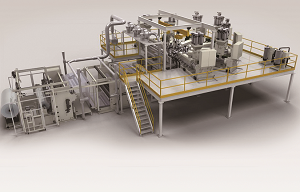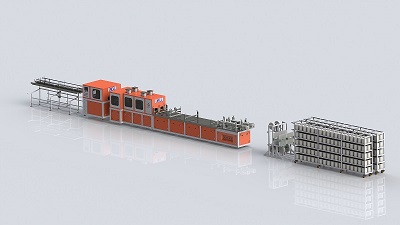XPS Heat Insulation Foamed Plate Extrusion Line(CO2 foaming)
XPS extruded polystyrene foam board (XPS for short) production line is generally divided into two types: carbon dioxide foaming and freon foaming. Gwel's carbon dioxide foamed XPS extruded board production line is 100% carbon dioxide foaming. Full use of "CO2 combined blowing agent" instead of "fluorine series" blowing agent, it greatly reduces the production cost of XPS extruded board, and CO2 as a blowing agent is more environmentally friendly, more conducive to sustainable development. The production line with this technology runs fast and smoothly. The width of the XPS extruded board produced is from 600mm to 1200mm, and the thickness is in the range of 20-60mm. The average density is between 30-45kg/m3, and its homogeneous closed-cell foam structure makes the produced boards have good stability, high compressive strength, and low water absorption. The advantage of the XPS extruded board production line with CO2 foaming technology is that it adopts the company's patented two-stage carbon dioxide foaming agent injection system to ensure accurate and quantitative delivery of carbon dioxide to the extruder system, thus ensuring the smooth operation of the entire production line. Gwell XPS equipment has two types: single screw tandem extruder and co-rotating flat twin tandem screw extruder. The specifications are GWS135/GWS150 single-screw extruder tandem type and GWP75/GWS150 co-rotating flat twin tandem single screw extruder. The largest GWP95/GWS250 co-rotating flat twin tandem single-screw extruder has been made. The co-rotating twin-screw extruder can process ingredients composed of multiple ingredients due to its excellent mixing efficiency. Sheet forming is formed by vacuum negative pressure forming. The vacuum forming unit newly developed by Gwell can reduce the proportion of the product under the premise of ensuring the quality of the sheet, thereby reducing the production cost of the product. Our company can switch between carbon dioxide foaming and freon foaming with mature technology. It can also be used to retrofit Freon equipment with carbon dioxide foaming device.
At present, most of the insulation boards on the market use Freon as a foaming agent, and Freon can cause fatal damage to the ozone layer. The environmentally friendly XPS extruded foam insulation board production line developed by Gwell Machinery Co., Ltd. adopts the international advanced carbon dioxide composite gas foaming technology, which fully complies with the Chinese energy-saving industrial policies, and has a high degree of automation. , Fast production speed, sensitive operation and many other advantages, but the price is lower than similar foreign production lines. The extruded foam insulation board produced by this equipment is a green building material. It not only has a long-lasting extremely low thermal conductivity, good dimensional stability and weather resistance, but also has uniform foaming, fine cells and high compressive strength. It is moisture-proof, does not absorb water, and is convenient for construction and transportation. It is well received by users.
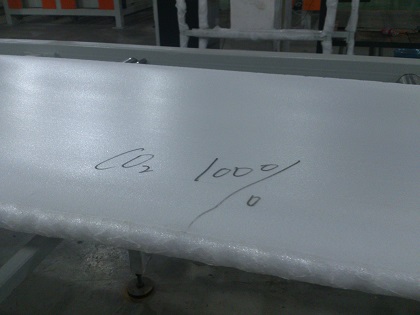

XPS extruded polystyrene foam board (XPS for short) has a perfect closed hole honeycomb structure. It is currently the best insulation material the market recognized as. Recycled EPS polystyrene granules is the main raw material. Its density, water absorption, steam permeability coefficient and thermal conductivity is lower than other types of tabular heat preservation material, Thus it has a strong intensity, light material, airtight, corrosion resistance, aging resistance, low price, etc. It is widely used in heat preservation and heat insulation roofing system; cold storage, barracks, grain storage, and civil building wall inside and outside the thermal insulation; airport runway, square and other ground construction; civil engineering of highway and railway; apartment, office building, factory building partition system and so on.
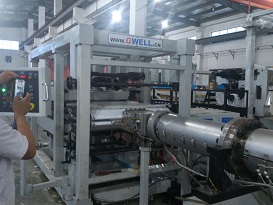
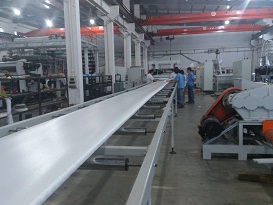
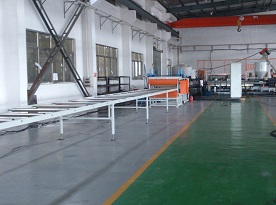


XPS extruded polystyrene foam board (XPS for short) has a perfect closed hole honeycomb structure. It is currently the best insulation material the market recognized as. Recycled EPS polystyrene granules is the main raw material. Its density, water absorption, steam permeability coefficient and thermal conductivity is lower than other types of tabular heat preservation material, Thus it has a strong intensity, light material, airtight, corrosion resistance, aging resistance, low price, etc. It is widely used in heat preservation and heat insulation roofing system; cold storage, barracks, grain storage, and civil building wall inside and outside the thermal insulation; airport runway, square and other ground construction; civil engineering of highway and railway; apartment, office building, factory building partition system and so on.
Performance features:
1. Thermal insulation
With the characteristics of high thermal resistance, low linearity and low expansion ratio, its structure has a closed-hole ratio of more than 99%, forming a vacuum layer, avoiding air flow and heat dissipation, and ensuring the durability and stability of its thermal insulation performance. Compared with the 80% closed-hole ratio of foaming polyurethane, its leading advantage is really obvious. Practice has proved that 20mm thick XPS extrusion insulation board, its insulation effect is equivalent to 50mm thick foam polystyrene, 120mm thick cement perlite. Therefore, this material is the best choice for building heat insulation.
2. High compressive strength
Due to the special structure of XPS plate, its compressive strength is extremely high and its impact resistance is extremely strong. According to the different models and thickness of XPS, its compressive strength can reach more than 150 ~ 500Kpa, and it can withstand various systems of the ground load. It is widely used in geothermal engineering, expressway, airport runway, square ground, large cold storage and interior decoration insulation and other fields.
3. Hydrophobic, moisture-proof
Water absorption is an important parameter to measure thermal insulation material. After absorbing water, the thermal insulation performance of the thermal insulation material decreases. In the case of low temperature, the water inhaled is easy to freeze, which destroys the structure of the thermal insulation material, thus reducing the compressive resistance and thermal insulation performance of the plate. Because polystyrene molecular structure itself does not absorb water, plate molecular structure is stable, no gap, solving other materials leakage, infiltration, frost, condensation and other problems.
4. Light weight, easy to use
XPS board's fully closed cellular foam chemical structure and its honeycomb physical structure make it light weight, high strength, easy to cut, transport, not easy to break, easy to install.
5. Good stability and anticorrosion
In use for a long period of time, it will not be aged, won't break down and produce harmful substances. Its chemical performance is very stable. After absorbing water and corrosion degradation, its performance is still stable. Under the environment of high temperature, it can still maintain its superior performance. According to relevant data, XPS extruded thermal insulation boards even after used for 30 ~ 40 years, still can maintain the outstanding performance, and won't decompose or mildew and no volatile toxic substances.
| Type of extruder | GWP65/GWS90 | GWS120/GWS150 | GWS150/GWS200 | GWP75/GWS150 | GWP95/GWS250 |
| Width of product | 600mm;900mm | 600mm;900mm; 1200mm | 600mm;900mm; 1200mm | 600mm;900mm; 1200mm | 900mm;1200mm |
| Thickness of product | 20mm - 60mm | 20mm - 60mm | 20mm - 60mm | 20mm - 60mm | 20mm - 60mm |
| Output | 100KG/H - 150KG/H | 200KG/H - 300KG/H | 300KG/H - 550KG/H | 450KG/H - 650KG/H | 800KG/H - 1000KG/H |
| Foaming volume | 100 - 150m3/24H | 150 - 250m3/24H | 300 - 400m3/24H | 350 - 450m3/24H | 650 - 800m3/24H |







